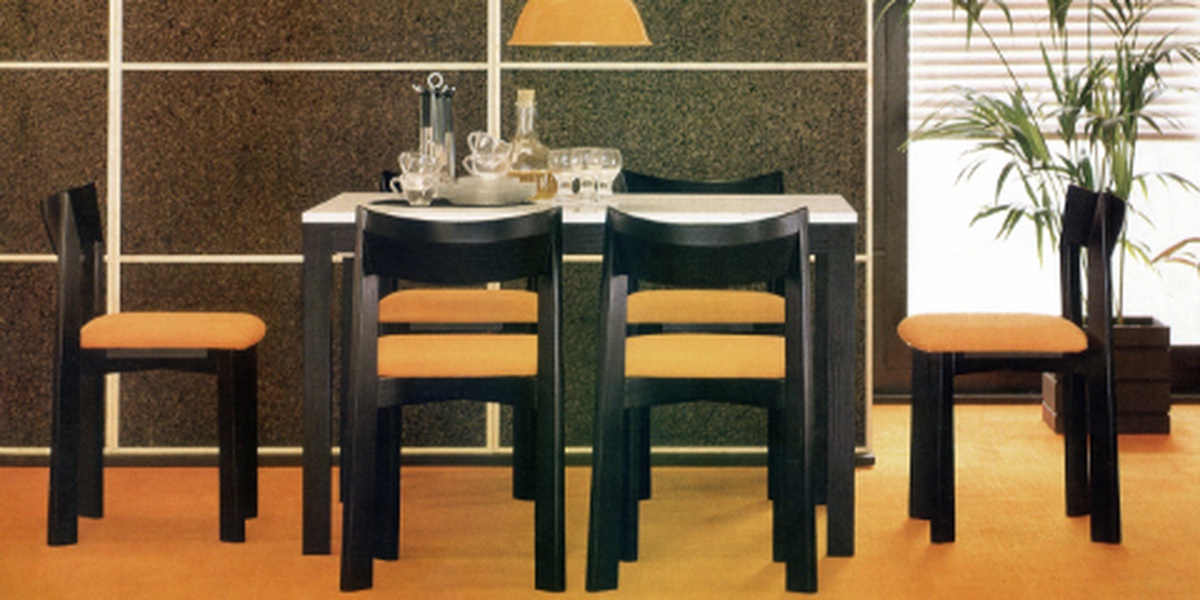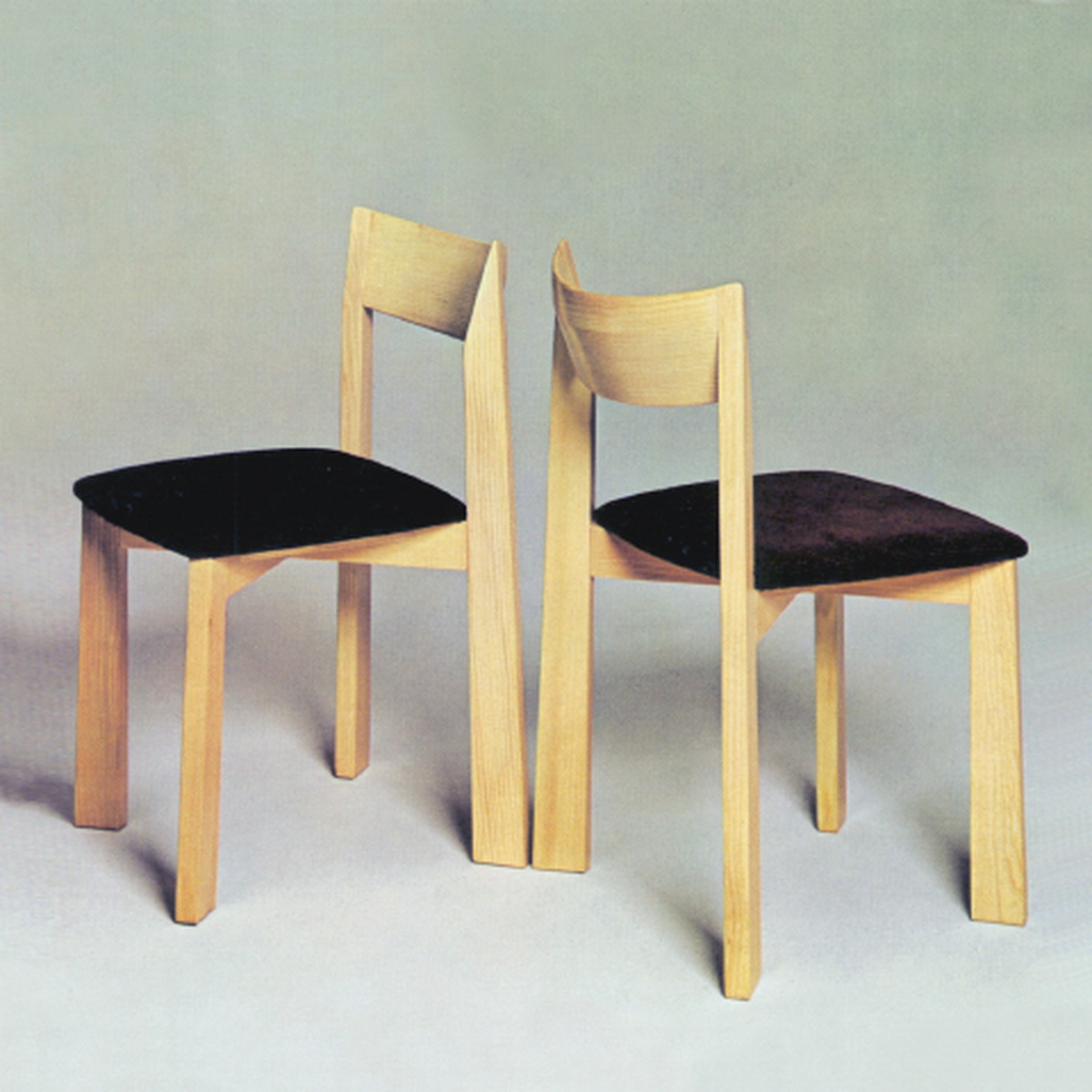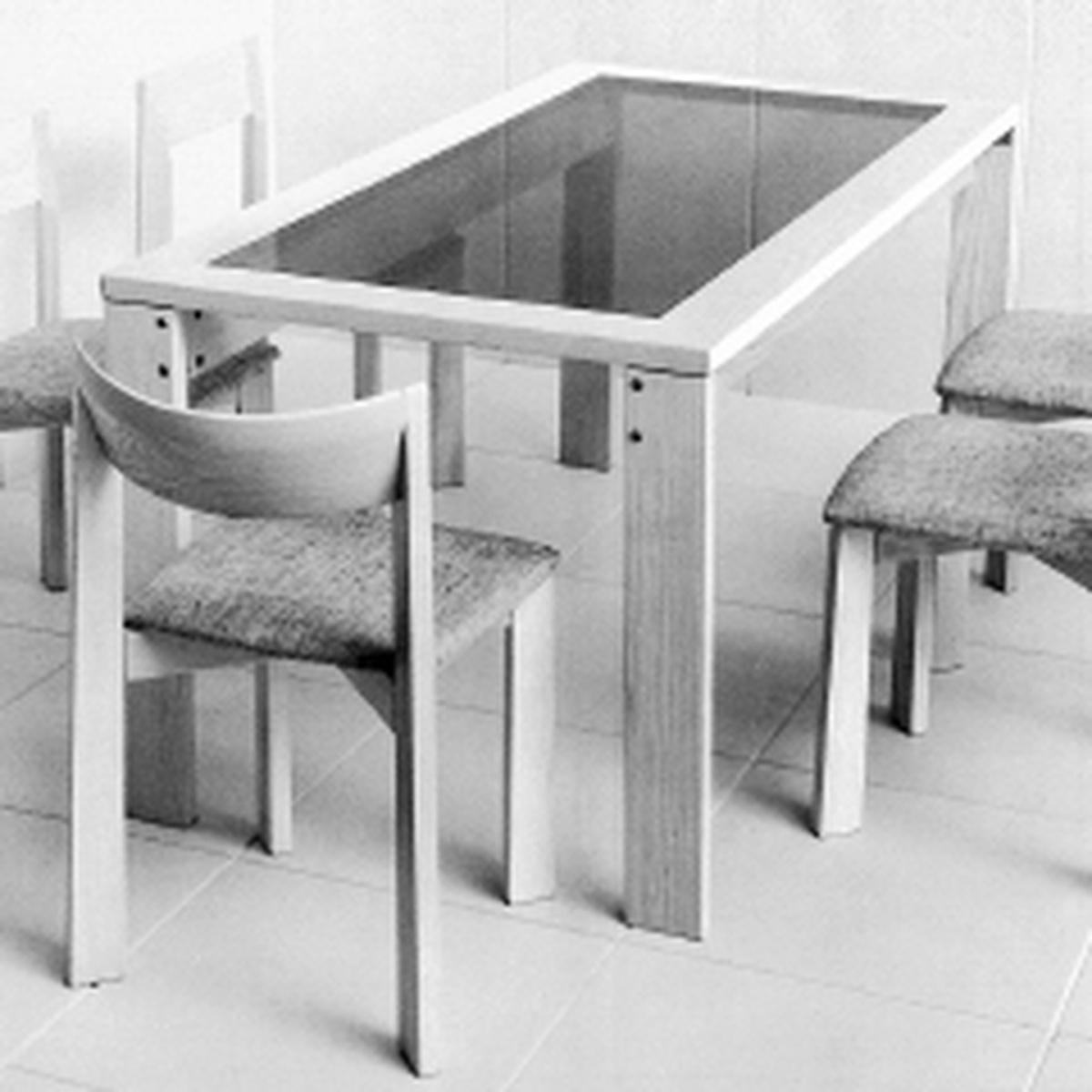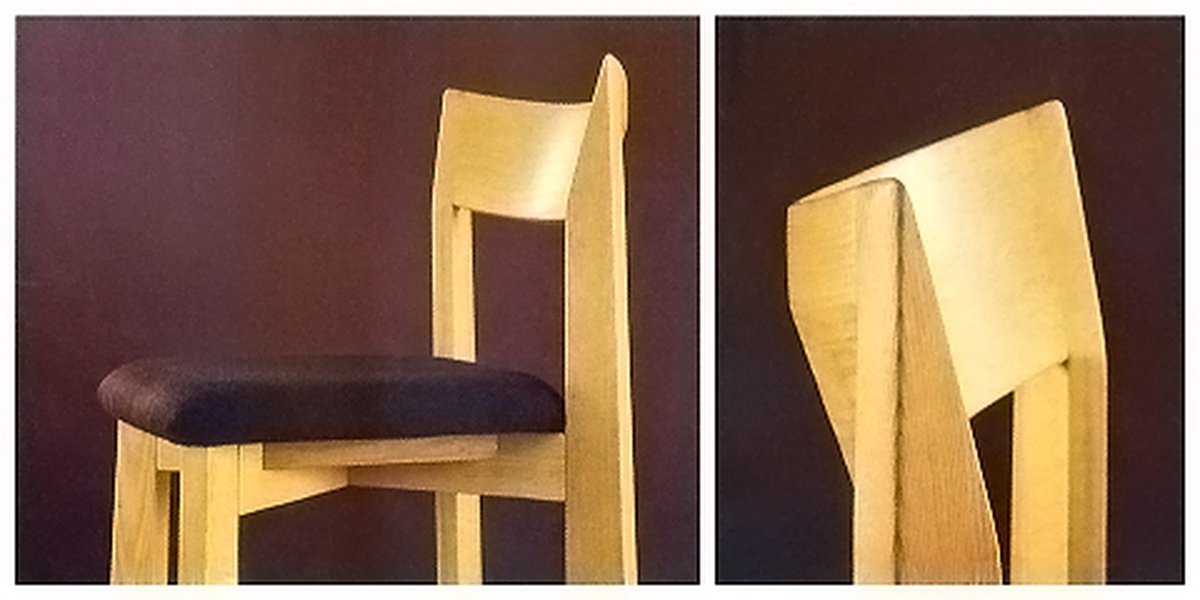Museo del Design del Friuli Venezia Giulia – Associazione di Promozione Sociale
P. IVA e CF 02863400301 – info@mudefri.it

Setting published in a Pallavisini’s catalogue, 1972
1972
Maria
Manufactured by Pallavisini
Beechwood or Ashtreewood chair with upholstered seating.
As often happens in Pasquinelli’s work, its innovative features are rooted into the humus of popular taste. Maria represents the antithesis to the '50s: the "flared" legs fits to the fashion trend of its time, the 70’s. The project also recover to dignity some characteristics of "rustic memory" like the sharp edges and the variable sections. At the same time comfort and construction, least sensual aspects, are solved by the refined geometry of the joints, especially the one between backrest and rear legs.
Maria had a considerable commercial success in Italy and abroad - especially within Central


This is, probably, the most "sculptural" among the chairs designed by Pasquinelli. It is based on a simple idea taken to extremes; it is a kind of practical demonstration of the correctness of Heraclitus' motto: "the hidden plot is stronger than the evident one" *. The diagonal traced by the supports placed under the seats (the usually hidden plot) becomes the clear rule of the overall design. The vertical components are therefore perfectly aligned with the profiles of the seat, causing an excess of lines coming out the barycenter placed underneath the upholstered seat. The "explosive" effect is exasperated by the design of the legs (with base tapering upward) that rewards each view angle.
* Heraclitus, Fragment 14 [20]
The Chair Maria with the matching table.
Details of the backrest and of the cross shaped element placed under the seat, that allows the designer to avoid any visible link between the legs.
